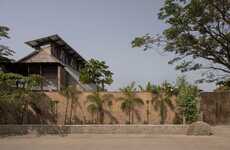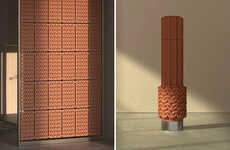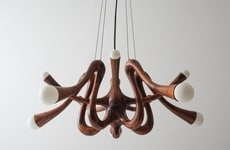
PAT Renovates the Falcon House with Passive Cooling Systems
Amy Duong — January 30, 2024 — Art & Design
References: patdesign.it & dezeen
Italian design studio PAT works together with fellow architect Ferdinando Fagnola on the Falcon House renovation project that is located on Kenya's Manda Island. The holiday home is defined by open-air bedrooms and terraces that are raised to overlook the lush surroundings over the treetops.
The self-sufficient building provides its water and electricity with passive cooling systems that don't need to rely on air conditioning. Co-founder of PAT, Andrea Veglia explains the renovation and how the cooling system functions, stating "The rooms are sheltered by corrugated metal canopies and fitted with adjustable wooden louvers, creating a simple yet effective climate control system." The cast concrete makes up the flooring, which contributes to temperature regulation as well.
Image Credit: Filippo Romano
The self-sufficient building provides its water and electricity with passive cooling systems that don't need to rely on air conditioning. Co-founder of PAT, Andrea Veglia explains the renovation and how the cooling system functions, stating "The rooms are sheltered by corrugated metal canopies and fitted with adjustable wooden louvers, creating a simple yet effective climate control system." The cast concrete makes up the flooring, which contributes to temperature regulation as well.
Image Credit: Filippo Romano
Trend Themes
1. Open-air Living - The Falcon House renovation project emphasizes open-air bedrooms and terraces for a refreshing living experience.
2. Passive Cooling Systems - The self-sufficient Falcon House incorporates passive cooling systems that eliminate the need for air conditioning.
3. Sustainable Architecture - PAT's renovation of the Falcon House showcases sustainable architectural designs and materials for eco-friendly living.
Industry Implications
1. Architecture - The architectural industry can explore innovative designs using open-air living concepts as well as passive cooling systems.
2. Hospitality - The hospitality industry could adopt the concepts of open-air living and sustainable architecture to enhance the guest experience and promote eco-tourism.
3. Construction - The construction industry can leverage the use of sustainable materials and passive cooling systems to build energy-efficient and environmentally friendly structures.
2.2
Score
Popularity
Activity
Freshness
























